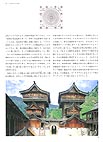Among books on Indian architecture, many are composed of divisions according to religious periods like those of Buddhism, Hinduism, and Islam, or regions like those of northern and southern India, and then each division is arranged in correlation with their development in history. That has been the conventional method used for writings on the same theme hitherto. However, this book, written by a young and energetic architect, Takeo Kamiya, is considerably different in its structure, organizing the buildings built on Indian soil, following every feature of Indian architecture caught through his own eye.
Mr. Kamiya, who thinks that architecture is artistic formation of what one evolves in one’s heart for human lives in this world, removes academic frames in the past like religions, regions, and ages, drawing images of Indian architecture through his sensitivity as an architect, as seen in this very book. This new perspective will probably disclose to us for the first time the ‘whole’ of India through architecture. I am greatly expecting to enjoy the new depiction of Indian architecture by Mr. Kamiya, who has already translated some books on Indian and Islamic architecture from English and French to Japanese, is now in this book daring to break usual frameworks.
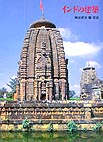 ____ ____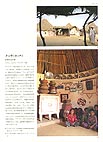
Page Samples
RECOMMENDATION by TERUNOBU FUJIMORI
If we were to divide the architectural history of mankind, it would be separated into two: the age of coexistence with gods and that of only humans. Japan became the latter extremely early from a global point of view, having detached itself from religions since the Warring States period in the 16th century, up until now. The cities are now filled with slick and shiny buildings made of steel, glass and concrete. Even though this is the fate of the current age, our hearts rather feel desolate, and our minds would have twinges. Accordingly, the owners of sensitive spirits in architectural society might wander various parts of the globe, looking for worthy substitutions. The heart of Mr. Kamiya has drifted ashore at Indian architecture.
India, the ocher-colored earth that had a long history with Brahmanism, Buddhism and Jainism, and is now dyed with Hinduism and Islam. When coming into touch with their buildings grown from this ground, one can know the state of being together with gods, which is not mysterious he says.
Mr. Kamiya starts with handy explanations on each religion’s divine aspects, then leads readers from the composition of buildings to the meanings of details as their rational results. After being led to this point, if one is perplexed what to do tomorrow, I am not concerned. Because anyhow that is India.
RECOMMENDATION by TETSUO YAMAORI
An architect, a graduate of the Tokyo University of Fine Arts and Music, being fascinated with India, made his way into the jewel mountains of Indian architecture, taking a great number of photographs. During these labyrinthian journeys of inquiry to India, he made one unpredictable discovery one after another, like that Indians have been constructing buildings as if producing sculptures, or the insight that main Indian monuments were made based on a wooden-like trabeation system despite being stone-piled edifices. I suppose these discoveries and insights have not been hitherto seen in discourses on Indian art and architecture.
This book is full of such stimulating or fascinating hypotheses, which is not surprising because all its fruits owe to the author’s energetic activities through as many as twelve journeys to India, including its surrounding countries. It is also a distinctive feature, which is not found in other books of the same kind, to discuss freely and expansively on various aspects of Indian architecture like cities, palaces and castles, while referring simultaneously to natural features like mountains, waterfronts or caves.
The author steps into the westernization of Indian architecture and even the contemporary architectural world as an architect working on the design of actual buildings. The book, reflecting such attitude of his present-day concerns, is inexhaustibly interesting.
|
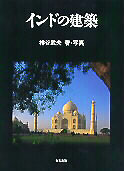

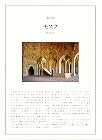 ____
____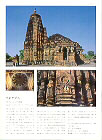
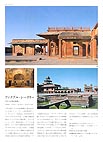 ____
____